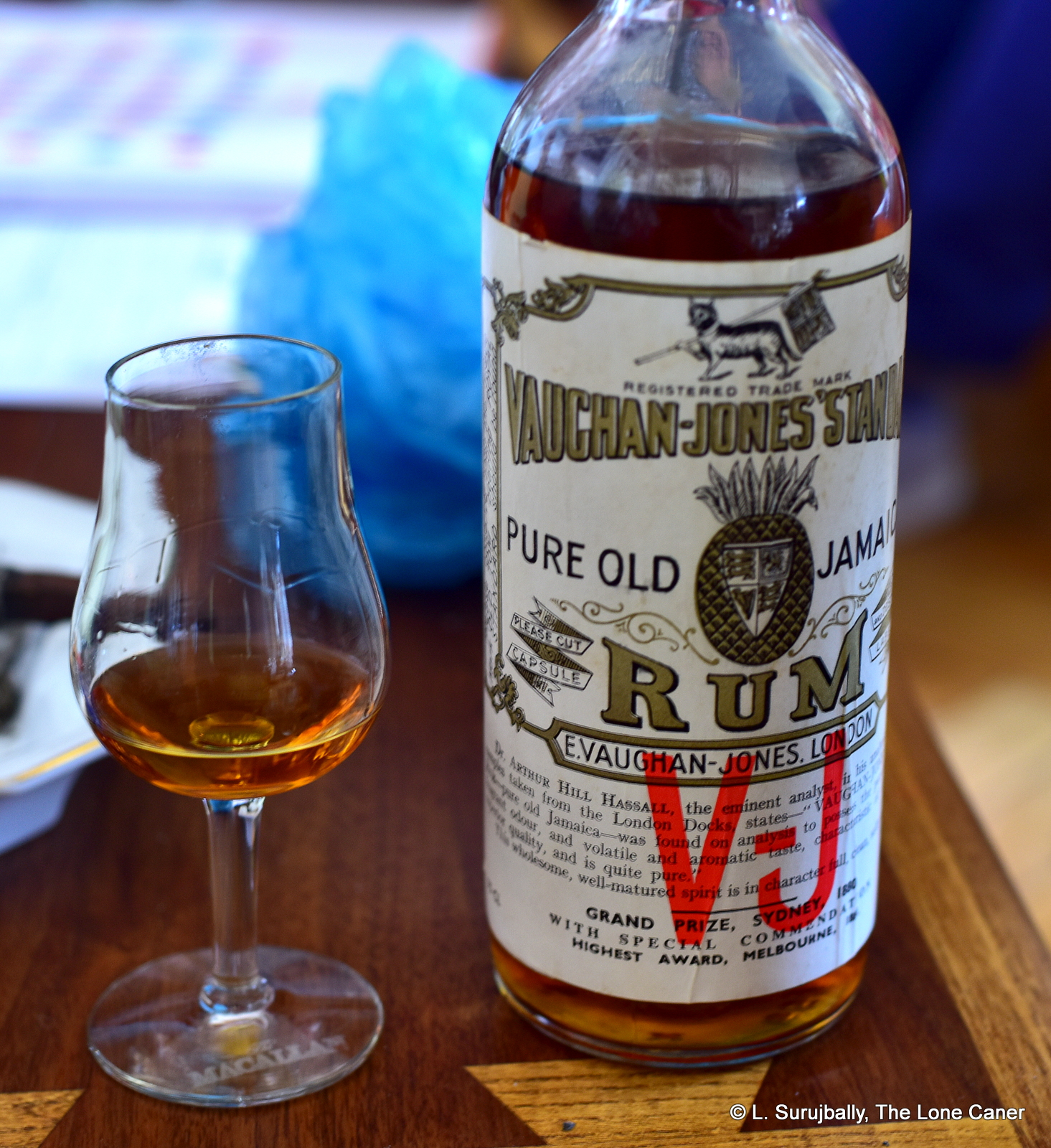
Rumaniacs Review #078 | 0512
Tracing this rum takes one through three separate companies and dozens of tiny, offhanded remarks made on a score of obscure websites. While it’s tough to pin down a date of formation, Vaughan-Jones appears to have been a London-based spirits bottler very well known for its V-J branded gin, and the company was certainly in existence by the 1880s, likely incorporated by Edward Vaughan-Jones (the exact year remains uncertain). According to the British Trade Journal of May 1882, Vaughan-Jones “Standard” spirits at that time were gins, whiskies, rum, Old Tom (a type of popular 18th century gin that was sweeter than London Dry but drier than Dutch Jenever), flavoured brandies, and bitters.
By the time this Jamaican rum came out in the 1960s (the date comes from an estimate of the Whisky Exchange website and I’ve got nothing better except from a tax stamp on the bottle which hints at the 1970s importation but not necessarily manufacture) another company called Hedges & Butler had taken over Vaughan-Jones, and registered various trademarks of V-J in 1957. Following this down the rabbit hole provides the information that they themselves were wine and spirits merchants dating back to 1667, were granted a Royal Warrant by King George IV in 1830 which was renewed by Queen Victoria in 1837. They were and remain primarily (but not exclusively) in the wine and whisky business, and were taken over by The Bass Charrington Group in the 1960s. Since 1998 they fall under the umbrella of Ian MacLeod Distillers which is where the story ends for now.
At all times, under whichever company owned the V-J brand, it appears that rum was very much an afterthought and not a major branch of the business. Some of the Vaughan-Jones family remain alive and remember their great grandfather Edward…it would be interesting to see what they know about the rums his company made. No data on the still, distillery or estate of origin is available. It is noted as being “pure” which suggests either no additives, or unblended and direct from a distillery which, from the taste, is what I chose to believe.
Colour – amber
Strength – 43%
Nose – It may just be a function of the age, but it does present somewhat oddly to those who have a bunch of modern Jamaicans to chose from. Not quite an ester bomb, this: still, it starts with brine, olives, citrus, some funk and miso soup, sweet soya, vinegar and herbs (dill, cilantro, rosemary). Nothing off-putting, just different.
Palate – Oh well, this was lovely. Soft, well rounded. Caramel, light molasses, herbs (dill and cilantro again), brine, tequila, olives, and a pinch of oregano and some old used coffee grounds left out in the sun too long. It also has aspects that reminded me of the Paranubes, something of a minerally and agave background, added some light white fruits at the back end, and overall, it’s really not that sweet. A shade thin, though.
Finish – Very nicely rounded and warm. It all comes together here and the oddity of the nose disappears completely. Light caramel and funk, herbs, brine, with almost no fruitiness at all.
Thoughts – Drinking this next to an Appleton 12, say, or some of the newer Hampdens and Worthy Park stuff, and you could infer this was an earlier form of what they are now making. It’s not as cultured, a bit raw, and the tastes and smells are in a different (primitive?) form of what we now take for granted. But it’s not bad, and if you’re a lover of historical artifacts from Ago, neither the background of the company nor the rum itself, is likely to disappoint.
(82/100)
Other Notes
Francesco from Lo Spirito dei Tempi, who I met briefly in April 2018, was the source of the bottle, and he noted that it was made for export to Australia from the 1880s to 1980s. In his article he remarks that it was aged three years in Jamaica and then for a further undisclosed time underground at the London docks.